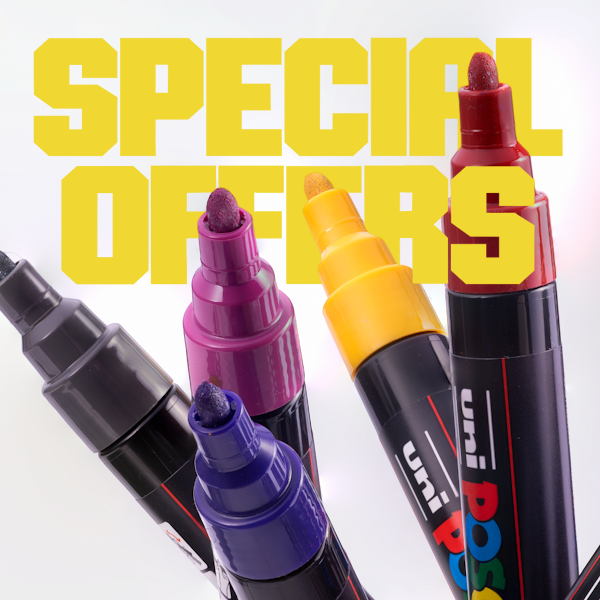If you’ve never worked with oil paint before then this handy guide’s just for you! We run through all of the different considerations than should be made when working with the masters’ favourite medium.
Oil paint is a mixture of a dry pigment and a liquid. It’s thick, it comes in tubes, and the paints are squeezed out onto a palette where they’re mixed together with a palette knife to make various colours. It’s then applied to a canvas with a stiff brush. Oils are slow drying and they usually take three days before you can apply another coat on top of them. This drying time is an advantage and disadvantage – the advantage is that you have time to refine and adjust what you paint before it dries; the disadvantage is that when putting two wet colours next to each other they can cross-contaminate if not applied accurately. The palette, the brushes and the wet painting must be handled carefully. Once a painting is thoroughly dry (three to six months), varnish is applied to protect the painting.
Michael Harding Oil Paints have a buttery consistency, are easy to handle and have high quality pigmentation. Learn more about them here.
Surfaces
The most common surface for oil colours and one that has been used for centuries is stretched primed canvas, often made from linen or regular cotton. Although linen is difficult to prime and stretch properly, it offers the smoothest and stiffest painting surface, lasting many years and is regarded by many as the gold standard for fine art. Cotton is more affordable and is easier to stretch. For painting outdoors, canvas pads and boards are a popular choice as they are more robust and cheaper to frame.
Primer
Gesso, also known as ‘glue gesso’ or ‘Italian gesso’ is a traditional mix of an animal glue binder (usually rabbit skin glue), chalk and white pigment. It is used to coat rigid surfaces, such as wooden painting panels, as an absorbent primer substrate for painting. We recommend Liquitex Professional Gesso.
Colours
Oil paint has a rich heritage with a creative history that spans centuries. Brands from the UK are at the forefront of the oils market, including Winsor & Newton, Michael Harding and Daler-Rowney. Each offers a vast and vibrant selection of colours made from quality pigments. Schmincke offer an excellent range of College Oils in 200ml tubes that are ideal for students, beginners and artists who use lots of paint. Daler-Rowney also offers Georgian Oil Colour Tubes for high quality and great value oil paints.
Brushes
The brush is arguably the essential tool for artists, so quality is a must. A stiff hair brush, usually made from hog hair, is recommended for oils as the bristle should have enough resilience to control and manipulate the colour. If working with thinned oil colour then consider brushes with a softer bristle. We stock over 30 different brush sets on our website that are recommended for oil & acrylic paints, such as the exclusive set from Da Vinci.
Solvents & Thickeners
Solvents can be used to thin oil paints to make them go further. Linseed oil and sansodor are both great solutions here and are available in many varieties that offer different effects. For thickening, use an impasto such as Winsor & Newton Liquin to add texture to your artwork. Turpentine can be used to remove varnish and white spirit is a low-cost solution used to clean brushes.
Varnishes
The right varnish can add extra sheen to your artwork and extend its life fantastically. Dammar is a pale yellow varnish that dries quickly to a high gloss finish. Retouching varnish offers UV protection and is great for retouching recently finished pieces, and spray varnishes enable you to create an even, thin layer without the need for applying with a brush. For glazing, try using a matt, satin or gloss medium, which will also add a depth of colour to your painting. Apply these with a brush, foam brush or sponge.
Interested in other ways to transform your oil paint artwork? Take a look at these blogs.
Paint Like a Professional with Oil Mediums
Mixing Oil Paints: Everything You Need To Know


























